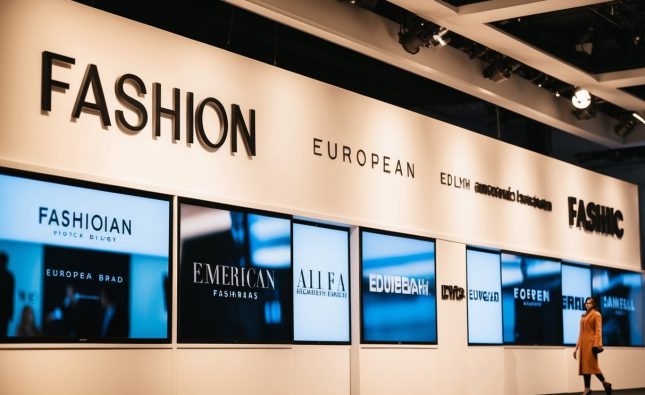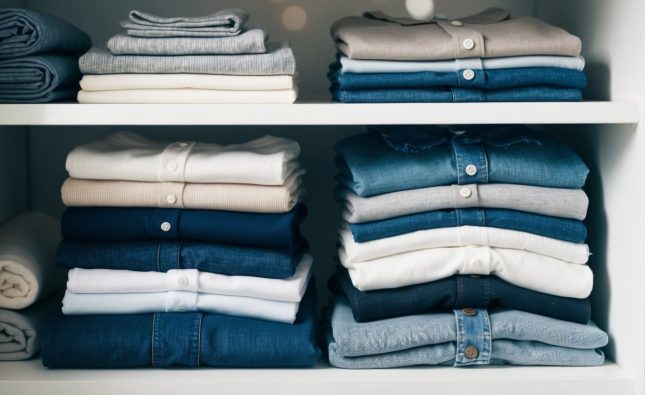
Sustainable fashion has gained significant traction in recent years as consumers become more aware of their environmental impact. This shift has led to a promising rise in brands that prioritize ethical practices, eco-friendly materials, and transparent supply chains. Fashion enthusiasts can find inspiration while making responsible choices through a selection of top sustainable fashion brands that are changing the industry landscape.

The allure of sustainable fashion lies not only in its environmental benefits but also in its commitment to quality and durability. Many leading brands focus on creating timeless pieces that withstand trends, ensuring that consumers invest in clothing designed to last. This thoughtful approach resonates with those who seek both style and substance in their wardrobe.
From high-end designers to accessible labels, the market offers a diverse array of sustainable options. Each brand tells its own story of innovation and responsibility, inviting consumers to make a positive impact with their purchases. By exploring these top sustainable fashion brands, individuals can align their clothing choices with their values.
The Rise of Sustainable Fashion

Sustainable fashion has gained significant traction in recent years, driven by a combination of consumer demand, environmental concerns, and ethical considerations. This evolution involves defining what sustainable fashion means, understanding its historical context, and recognizing current trends.
Defining Sustainable Fashion
Sustainable fashion refers to clothing, accessories, and footwear produced with minimal environmental impact. This concept encompasses various practices, including using organic materials, promoting fair labor conditions, and implementing recycling programs. Brands committed to sustainability prioritize transparency in their supply chains, aiming to reduce waste and carbon footprints.
Key principles include:
- Eco-friendly materials: Organic cotton, hemp, and recycled polyester.
- Ethical production: Fair wages and safe working conditions.
- Durability: High-quality products designed to last.
Historical Context and Evolution
The roots of sustainable fashion can be traced back to the 1960s and 1970s, when the counterculture movement began advocating for more environmentally friendly practices. The concept gained momentum in the 1990s with the rise of eco-fashion. Designers started to use sustainable materials and adopt ethical production methods.
The 2000s saw the establishment of organizations promoting sustainability in fashion, such as the Ethical Fashion Forum. The conversation around climate change and social responsibility has further influenced brands to adopt sustainable practices, leading to today’s growing demand for eco-conscious products.
Current Trends in Sustainability
Today, sustainable fashion is characterized by several prominent trends. Circular fashion is gaining attention, with brands encouraging consumers to recycle and repurpose clothing. This practice helps reduce waste and promotes conscious consumption.
Additionally, technology plays a vital role in advancing sustainability. Innovations such as 3D printing and digital design minimize material usage and waste. More brands are also embracing slow fashion, emphasizing quality over quantity, and encouraging consumers to buy less but invest in timeless pieces.
Consumer awareness is crucial as shoppers increasingly seek sustainable options. This shift has prompted both established and emerging brands to prioritize sustainability in their business models.
Criteria for Top Sustainable Fashion Brands
Evaluating sustainable fashion brands involves several critical factors. Key considerations include the sourcing of materials, ethical production practices, and the level of transparency maintained by the brand.
Material Sourcing and Environmental Impact
Material sourcing directly influences a brand’s environmental footprint. Sustainable fashion brands prioritize organic, recycled, or upcycled materials. Common examples include:
- Organic Cotton: Grown without harmful pesticides.
- Tencel: Made from sustainably sourced wood pulp.
- Recycled Polyester: Reduces plastic waste by repurposing used materials.
The environmental impact is also assessed by the production methods. Brands using water-saving technologies, non-toxic dyes, and renewable energy sources demonstrate a commitment to minimizing ecological harm. Additionally, certifications such as GOTS (Global Organic Textile Standard) and OEKO-TEX signify adherence to sustainability standards.
Ethical Production and Labor Practices
Ethical production focuses on ensuring fair labor practices throughout the supply chain. This includes timely wages, safe working conditions, and respect for workers’ rights. Brands often affirm their commitment by:
- Conducting regular audits of factories.
- Implementing fair trade principles.
- Supporting local communities through job creation.
Transparency in labor practices is essential, allowing consumers to verify claims made by the brand. Brands that disclose factory locations and labor conditions provide further evidence of their dedication to ethical standards.
Transparency and Brand Accountability
Transparency is a crucial component for sustainable fashion brands. It encompasses how openly a brand shares information regarding its practices and supply chains. Brands that publish sustainability reports offer insights into their environmental and social impacts.
Moreover, a commitment to accountability is reflected in third-party certifications and partnerships with environmental organizations. Clear communication about the lifecycle of products, from sourcing to disposal, empowers consumers to make informed choices. Brands that embrace transparency often foster trust and loyalty among their customer base.
Leading Sustainable Fashion Brands
Sustainable fashion is increasingly recognized for its need and impact. These brands provide innovative solutions, focus on ethical practices, and offer options that cater to a range of budgets.
Pioneers in Eco-Friendly Apparel
Brands like Patagonia and Eileen Fisher lead the charge in eco-friendly apparel. Patagonia focuses on using recycled materials and advocates for environmental initiatives. Their Worn Wear program promotes the repair and resale of used clothing, reducing waste.
Eileen Fisher emphasizes sustainability through timeless designs and organic fabrics. They have a Renew program that encourages customers to return worn items for recycling or resale. These pioneers exemplify how style can align with environmental responsibility.
Innovators in Ethical Fashion
Reformation and Amour Vert embody innovation in ethical fashion. Reformation is known for its transparency; they provide detailed information on the environmental impact of each garment. Their practices include using sustainable materials and water-saving technologies.
Amour Vert takes a local approach by producing in the USA to minimize their carbon footprint. Each purchase contributes to planting a tree, making it a brand committed to environmental restoration. These innovators show that ethical can also be trendy.
Affordable and Accessible Options
Sustainable fashion is not limited to high-end brands. Everlane and ASOS showcase affordable options for conscious consumers. Everlane focuses on radical transparency, revealing the true cost of each item, from materials to labor.
ASOS has committed to sustainability through its ASOS Responsible Edit, featuring pieces made from recycled materials. They aim to make sustainable fashion accessible to younger audiences. These brands illustrate that eco-friendly choices can fit various budgets.
Consumer Impact and How to Choose
Understanding the impact of consumer choices on sustainability is crucial. Examining brand practices and building a sustainable wardrobe can make a significant difference.
Assessing Brand Practices and Claims
When evaluating sustainable fashion brands, consumers should research their practices and verify claims. Look for certifications such as GOTS (Global Organic Textile Standard) or Fair Trade to indicate ethical sourcing and production.
Key aspects to consider include:
- Materials Used: Brands should utilize organic, recycled, or biodegradable materials.
- Labor Practices: Fair wages and safe working conditions are essential indicators of a brand’s commitment to sustainability.
- Transparency: Brands that openly share their supply chain information demonstrate accountability.
Investigate whether brands offer measurable sustainability goals or progress reports to assess their genuine commitment.
Building a Sustainable Wardrobe
Creating a sustainable wardrobe involves thoughtful purchasing and mindful usage. Consider adopting a capsule wardrobe approach, focusing on fewer, high-quality pieces that can be mixed and matched.
Tips for a sustainable wardrobe include:
- Prioritize Quality: Invest in items that are durable and made from sustainable materials.
- Choose Versatile Styles: Select clothing that can transition between different occasions.
- Buy Secondhand: Thrift stores or online resale platforms can provide affordable, eco-friendly options.
Ultimately, consumers should aim for a balance between personal style and sustainability, reducing their fashion footprint while expressing individuality.












